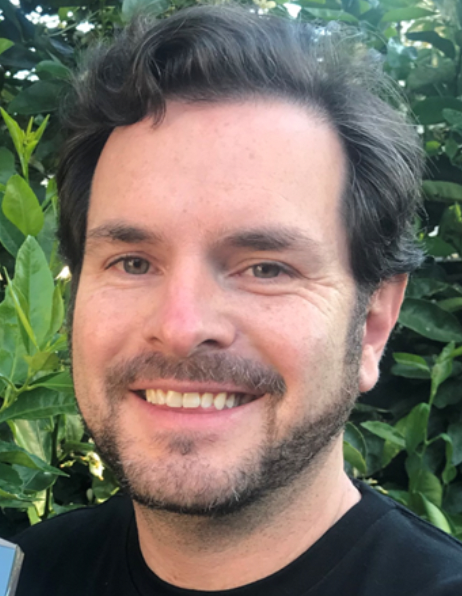This week in our Startup Spotlight blog series is our 2021 XTC co-Grand Winner – Hillridge Technology!
AI-enhanced, blockchain-protected real-time Parametric Weather Insurance platform


Six Questions for Dale Schilling, CEO and Founder, Hillridge Technology of Australia
Australian native Dale Schilling studied for 5 years in Japan, first studying the language at the Tokyo University of Foreign Studies and then 4 years to do an Economics degree at Kyoto University. After 5 years managing natural resource projects at Mitsui & Co, he got his MBA at Harvard and then spent 12 years at Boston Consulting Group helping mining clients optimize their operations. This background led him to found Hillridge in 2018. In 2020, Hillridge was a Finalist in the THRIVE Australia competition of XTC partner SVG Ventures, from which they were invited to join the 2021 Extreme Tech Challenge in the Fintech category, where they rose to be the 2021 co-Grand Winner. That summer, Hillridge’s service first launched in Australia. In September 2022, Hillridge announced an A$2.3M seed funding round including XTC partners Sangha Capital and Actai Ventures.
1. What problem is Hillridge solving and how?
Farmers and other climate exposed SMEs (small and medium sized enterprises) have not typically had access to sophisticated risk offsets for extreme weather events with which I became familiar working in the mining and resource industries.
The essence of farming is continually managing for risks, deciding what crops to plant each season, what feed to lay in for livestock, and how to have back-up if there is, say, a severe frost or last-minute monsoon.
In the last 20 years, weather patterns are becoming more volatile while farming is becoming more capital intensive. A combine harvester may cost as much as a half-million-dollars. While more established farmers are well capitalized, overall farm debt is increasing. One study showed 52% of Australian farmers have taken out quite massive loans for operations and, on a same-yield basis, farmers were earning 23% less than in 2000. So far, productivity has offset that, but on the whole, farming is far riskier than in prior generations.
But they have not had access to the same financial tools to manage that risk. When we researched insurance providers they would always claim they did not have the data for actuarial development, but that’s patently not true. But also, while they could deal with data on a macro scale they are not set up to assess risks on a micro scale, which is needed to provide coverage for individual small-hold farmers or in hilly geographies, which describes most farming outside the USA.
Australia has been digitizing weather data and providing 5km2 plots of data going back to the 1950s. So we’ve been able to develop a platform that makes use of that historical data, along with current satellite data to continuously monitor the weather experience at the site of each farm to build a micro-targeted risk profile for that particular plot of farmland, against which financial instruments can be designed and priced.
2. What is your background that led you to founding Hillridge?
This is actually my first startup, but I have spent the better part of two decades in Japan and then in consulting working on similar problems.
First, I spent most of that time developing and implementing hedging strategies using tools like financial derivatives, so I knew the elements that were needed. These were largely for massive natural resource projects that have the money to pay for painstakingly building datasets.
My earlier background is that I grew up in a farming family, so I’ve witnessed firsthand how devastating extreme weather can be. We’ve had mixed sheep and cropping going back many generations in Australia. My grandpa used to breed merino rams at the original Hillridge homestead. My dad went to buy a ram, and in the course of that met my mother and that’s how I came to be, so I really feel farming in my bones.
Secondly, my consulting background was a great preparation for entrepreneurship. As a consultant you’re dealing with a diversity of large problems for clients, traveling constantly and every day tackling new challenges. This resilience and need for agile innovation is a lot of what startups deal with, so I’ve been able to slip into this lifestyle rather easily.
And my work in consulting included designing, managing and training users on sophisticated derivatives and other financial instruments for risk mitigation. So I knew all the pieces that were needed. It bothered me that the range of risk offset products available to our family farm covered unlikely events, but AVOIDED what REALLY mattered, which was severe weather like drought, flood, extreme temperatures. Then in 2018, I was researching responsible applications of blockchain and the trainer mentioned weather index insurance, and I saw that this could be an accessible, affordable way to serve numerous, dispersed clients like farms and pastoral properties.
3. What is unique about your technology and what is the validation status?
One new development since 2000 is the rapid sophistication of modeling software for crops, so-called “digital twins” that allow you to put in many variables, including weather, to see how to best optimize yields. So, we are plugging in the historical data we have available, along with real-time data that is now available for each farm, to build detailed crop yield scenarios against which weather insurance can be developed.
Another key innovation relates to distribution. Local insurers have a trusted relationship with their clients, but being local, their risk is skewed to that place, so they can only cover so much. Global underwriters are, of course, far more diversified. For example, El Niño creates drought in Australia, and is associated with bumper crops in Latin America. But these global underwriters are not really set up for local retail distribution. So, our pricing and cloud-access model allows underwriters to, adjusting a cliche, offset globally but sell and service locally.
And part of that service model is that, traditionally, if you had a severe event like frost or flood, you had to first file a claim with the insurer. They would then visit, at some later time, to do an on-site damage assessment, basically to see if it was really as bad as you said it was, noting that it was in their financial interest to find that it was less bad than you said. Then they would send an assessment, that would be reviewed elsewhere and so on, and eventually you might get paid.
Our system is what is called parametric insurance, which means that the payout is based on predefined weather occuring based on a metric like temperature, rain or wind speed. If particular telemetry cross particular thresholds over particular timeframes, -ping- a wire transfer is made right then. No assessments, reviews, or delays.
This is possible because of the sophisticated AI that is applied to all the datasets and the blockchain ensuring privacy and security. So, at some level, this functionality could only have been provided this smoothly in just the last few years with all the recent advancements and broader availability and affordability of AI, cloud, distributed ledgers and mobile technology.
One of the early validations relates to canola cultivation. New hybrids can provide double the per-acre income of wheat, but the seeds are quite costly and there is a strong early-drought risk, if they don’t get good hydration in the first 6 weeks. So farmers were reluctant to bet on the higher income because of the up-front risk. Hillridge’s tools allow them to get parametric insurance that can lower the barriers to seizing that opportunity to boost output.
4. What are your Go-To-Market ideas and traction received so far?
So, first, to quote an old line, “we don’t make the products you buy, we make the products you buy better”. Hillridge is not an insurance carrier. Instead, we work through local farm services and inputs retailers such as Nutrien, which is the largest such in Australia. They are offering products underwritten by Mitsui Sumitomo with Marsh as the insurance broker.
That model launched in Australia in 2021. We are now looking to enter new markets, we are going to be looking similarly to partner with local retailers who have that trusted relationship with the farmer or terrestrial project manager and our current or other global insurers who will underwrite the risk.
5. What’s next?
Basically, scaling globally. Once it got rolling in Australia, Marsh found applications for its operations around the world in places like Britain or Argentina or Mexico.
Right now, we’re looking nearby at Indonesia where one retailer services over 400,000 farms. Also at the end of 2021 we received a grant from the NEAR Foundation for blockchain development for Hillridge to develop typhoon insurance for Vietnam.
Our current and other global underwriters seem keen. The challenge is always, so to speak, “the last mile”, those local services groups that have the trusted relationship with the farmers, so we’re cultivating those relationships. When those are properly set, our tools and the global capital is ready and waiting.
Another opportunity is to scale beyond agriculture. Our special acumen is with meteorological data, so we are looking at other customer bases that care about weather, particularly renewable energy – solar and wind.
Our new seed funding just closed should provide us the additional resources to jump-start these new applications and geographies.
6. Tell us about your experience with XTC and what were the benefits/takeaways?
Well, given that we went through the XTC during a major pandemic-related lockdown in Australia, the XTC itself was a well organized experience. From the great virtual bootcamp sessions, to pitch coaching from Bill Reichert, and you managed the virtual judging quite well. For Hillridge, the win at XTC generated -alot- of interest from investors – social impact investors, insurtech investors, agtech investors – which allowed us to strongly launch our Seed Round funding which we recently closed with the participation of TWO of the judging groups who evaluated our pitch at XTC, the Sangha Capital group from Switzerland and ACTAI Ventures from the USA. Now the world is opening back up again, we’re also tapping into the global expertise and reach of the XTC network – meeting many of the judges and advisors face-to-face, so the contacts and advice are coming at just the right time as we expand globally.
XTC really gave us top-drawer exposure and we’ve done our very best to capitalize on that.
Interviewed and edited by John Martin